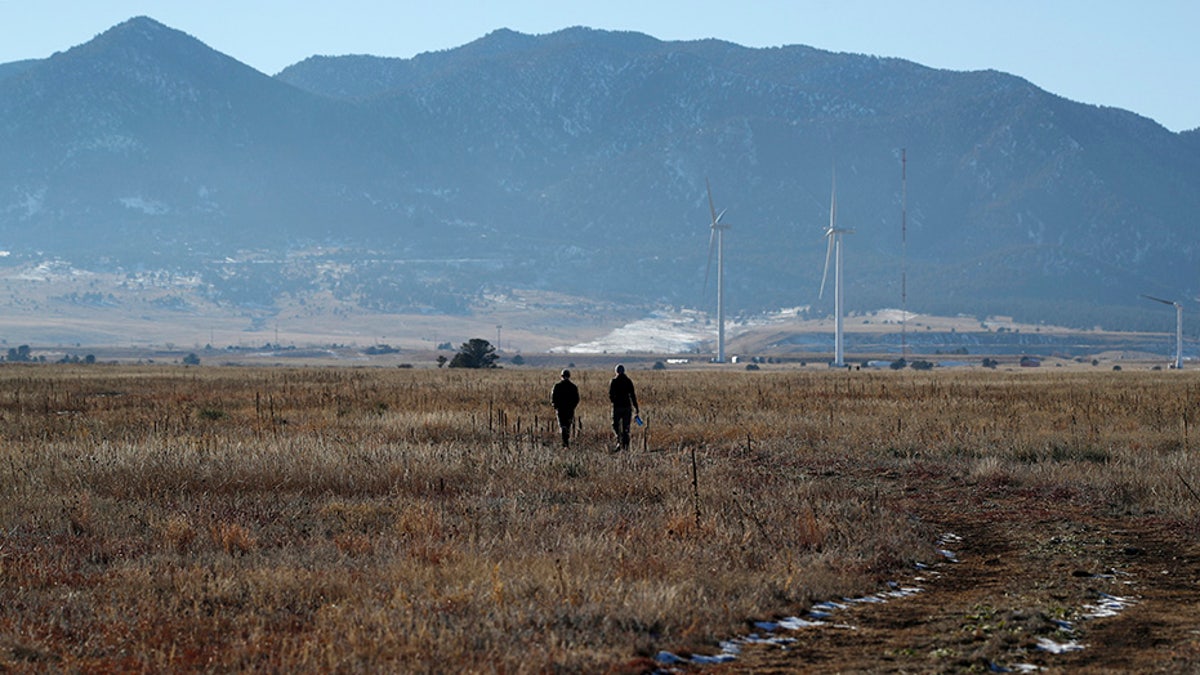Fox News Flash top headlines for August 18
Fox News Flash top headlines for August 18 are here. Check out what's clicking on Foxnews.com
The sites where the United States manufactured and tested some of the most lethal weapons known to humankind are now peaceful havens for wildlife.
They now protect black bears and black-footed ferrets, coral reefs and brushy steppes, rare birds and imperiled salmon.
An astonishing array of animals and habitats has flourished on six obsolete weapons complexes — mostly for nuclear or chemical arms — because the sites banned the public and other intrusions for decades, The Associated Press reported.
The government had converted the sites into refuges under U.S. Fish and Wildlife Service management.

This June 1971 photo shows the facility and cement pad at ground zero on Amchitka Island, Alaska, where a 1-megaton nuclear blast was detonated about 4,000 feet underground in 1969. (AP Photo, File)
Amchitka Island, part of Alaska Maritime National Wildlife Refuge, was the site of three U.S. underground nuclear tests in the 1960s and early 1970s. An unknown volume of radioactive material remained in caverns blasted out by the detonations. Part of the island, closed to the public, has been designated a wilderness area.
Big Oaks National Wildlife Refuge, Indiana, formerly was known as Jefferson Proving Ground. The Army had test-fired more than 24 million artillery rounds over half a century there. The firing range remained littered with an estimated 154,000 pounds of shell fragments made of depleted uranium. The refuge was designated a globally important bird area by an avian conservation coalition, with part of the site open to the public.

A sign at the Hanford Nuclear Reservation warning of possible hazards in the soil there along the Columbia River near Richland, Wash. (AP Photo/Elaine Thompson)
Nine reactors produced plutonium for U.S. nuclear weapons at the site since known as Hanford Reach National Monument in Washington state. Amid the urgency of World War II and the Cold War, Hanford left behind vast quantities of contaminated soil and water. Its shrubby grassland and Columbia River habitat supported mink and otters, threatened salmon and many other species.

Johnston Island, part of Johnston Atoll is 825 miles southwest of Honolulu. (AP Photo/Ronen Zilberman, File)
Johnston Island, part of the Johnston Atoll National Wildlife Refuge in the central Pacific, was a launching pad for U.S. atmospheric nuclear tests in the 1960s. In 1962, two launches failed, scattering radioactive debris on the 1-square-mile island. The refuge has been home to abundant seals and corals since then.

Hikers heading down a trail in the Rocky Flats National Wildlife Refuge in Broomfield, Colo., in November 2018. (AP Photo/David Zalubowski, File)
The U.S. Energy Department manufactured plutonium triggers for nuclear warheads at the site later known as Rocky Flats National Wildlife Refuge, northwest of Denver. It had a long history of leaks, fires and environmental violations. Its rare tallgrass prairie has been home to hundreds of species, including an endangered jumping mouse.

Critics have said Rocky Mountain Arsenal in Colorado showed the shortcomings of a cleanup designed to be good enough for a wildlife refuge but not for people to live there. (AP Photo/David Zalubowski, File)
Rocky Mountain Arsenal National Wildlife Refuge, in the northeast Denver suburbs, was a site where the Army had manufactured chemical weapons and private companies made pesticides. Bald eagles nested at the site, and wildlife officials have reintroduced bison and endangered ferrets.
The military closed the sites to keep people safe from the dangerous work that went on there, not to save the environment, said David Havlick, a professor at the University of Colorado at Colorado Springs who has studied military-to-wildlife conversions.
CLICK HERE TO GET THE FOX NEWS APP
Many of the conversions came after the first and second world wars. It was an inexpensive way to expand the national refuge system, especially in urban areas with scarce open space, said Mark Madison, the Fish and Wildlife Service’s historian.
When the Cold War thawed in the 1980s, more surplus military lands were earmarked for refuges. Some were among the most dangerously polluted sites in the nation but held swaths of hard-to-find habitat.
The Associated Press contributed to this report.









































